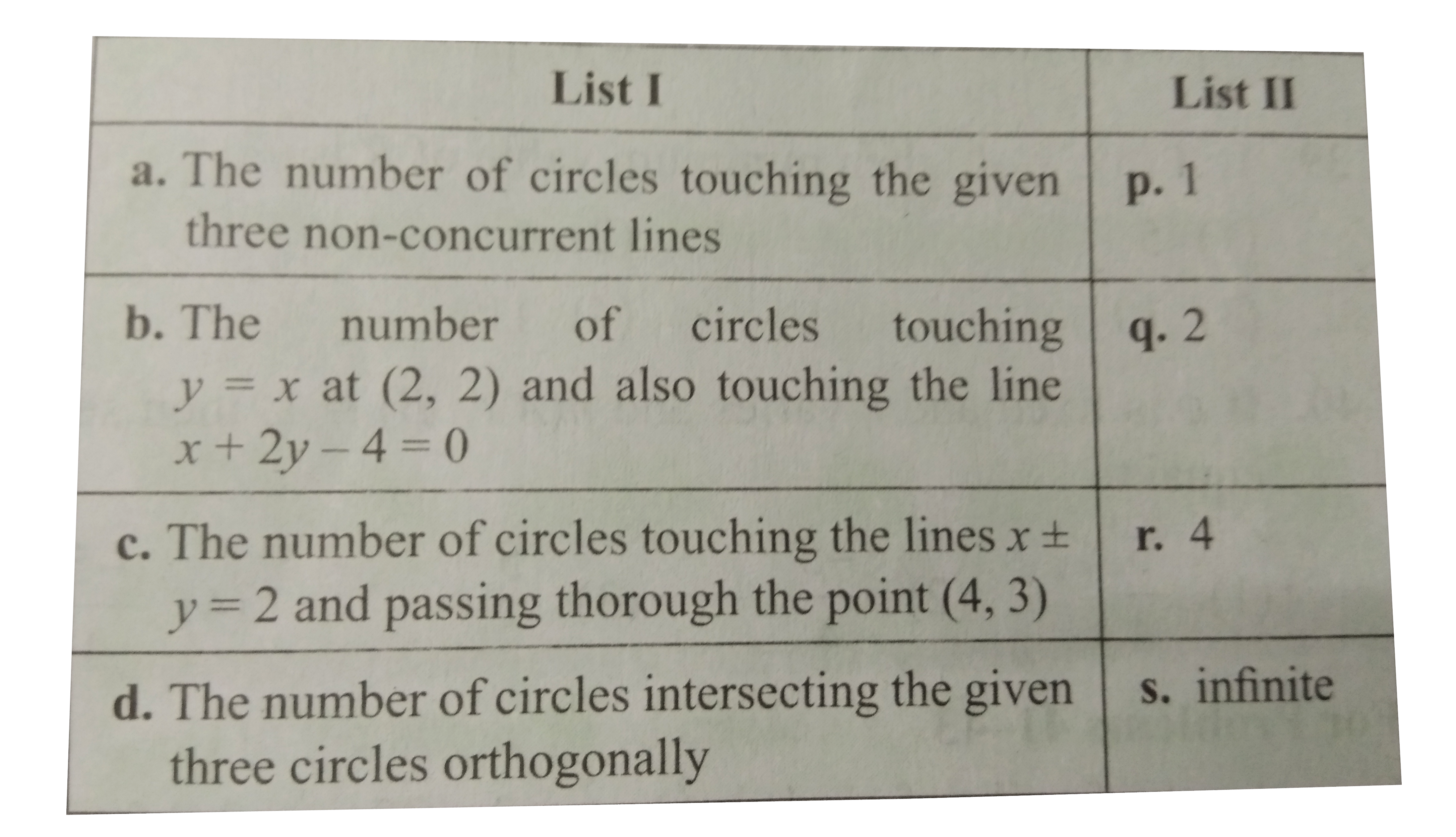In the expansion of (x3−1x2)n,n∈N , if the sum of the coefficients of x5andx10 , then n is a. 25 b. 20 c. 15 d. none of these
25
20
15
None of these
The correct Answer is:C
(1x2−x3)n
General term Tr+1=n!r!(n−r)!(−1)n−rx5r−2n
If 5r−2n=5, then 5r=2n+5 or r=2n5+1
If 5r−2n=10, then 5r=2n+10 or r=2n5+2
x5 and x10 terms occurs if n=5k
Given that sum of x5 and x10 is zero.
⇒5k!(2k+1)!(3k−1)!−5k!(2k+2)!(3k−2)!=0
or 13k−1−12k+2=0
or k=3⇒n=15
Topper's Solved these Questions
- BINOMIAL THEOREMBook:CENGAGE ENGLISHChapter:BINOMIAL THEOREMExercise:Multiple Correct Answer Type
Explore 27 Videos
- BINOMIAL THEOREMBook:CENGAGE ENGLISHChapter:BINOMIAL THEOREMExercise:Linked Comphrension
Explore 20 Videos
- BINOMIAL THEOREMBook:CENGAGE ENGLISHChapter:BINOMIAL THEOREMExercise:Concept Application Exercise 8.8
Explore 10 Videos
- AREABook:CENGAGE ENGLISHChapter:AREAExercise:Comprehension Type
Explore 2 Videos
- CIRCLE Book:CENGAGE ENGLISHChapter:CIRCLE Exercise:MATRIX MATCH TYPE
Explore 7 Videos
Similar Questions
The value of x in the expression (x+x(log)10x)5 if third term in the expansion is 10,00,000 is/are
a. 10 b. 100 c. 10−5/2 d. 10−3/2
View SolutionThe sixth term in the expansion of (√2log(10−3x)+(2(x−2)log3)15)m is equal to 21, if it is known that the binomial coefficient of the 2nd 3rd and 4th terms in the expansion represent, respectively, the first, third and fifth terms of an A.P. (the symbol log stands for logarithm to the base 10) The value of m is
View SolutionIf the third term in the expansion of (1+x)mis−18x2, then find the value of m.
View SolutionIn the following figure, the graphs of two functions y = f(x) and y = sin x are givne. They intersect at origin, A(a,f(a)),B(π,0)andC(2π,0).Ai(i=1,2,3) is the area bounded by the curves as shown in the figure, respectively, for x∈(0,a),x∈(a,π),x∈(π,2π).
If A1=1+(a−1)cosa−sin a, then

The function f(x) is
View SolutionMatch the following lists.

View SolutionMaximum sum of coefficient in the expansion of (1−xsinθ+x2)n is 1 b. 2n c. 3n d. 0
View SolutionIn the expansion of (x3−1x2)n,n∈N if sum of the coefficients of x5 and x10 is 0 then n is
View SolutionIf n is not a multiple of 3, then the coefficient of x^(n) in the expansion of log_(e)(1+x+x^(2)) is : (A) (1)/(n)(B)(2)/(n)(C)-(1)/(n)(D)-(2)/(n)
View SolutionIf a and b denote the sum of the coefficients in the expansions of (1−3x+10x2)nand (1+x2)n respectively, then write the relation between a and b.
View SolutionIn the expansion of (x2+2x+2)n,≠ψlonN (A) coefficient of x=n.2n (B) coefficient of x^2=n^2.2^(n-1)(C)coefficientofx^3=n^22^(n-2) (D) none of these
View SolutionIf n is a positive integer and the coefficient of x10 in the expansion of (1+x)15 is equal to the coefficient of x5 in the expansion of (1−x)−n then n =
View SolutionIf the sum of the coefficients in the expansion of (1-3x+10 x^2)^ni sa and if the sum of the coefficients in the expansion of (1+x^2)^n is b , then a. a=3b b. a=b^3 c. b=a^3 d. none of these
View SolutionIn the expansion of (x3−1x2)n,n∈N if sum of the coefficients of x5 and x10 is 0 then n is
View SolutionIf |x|<1, then the coefficient of xn in expansion of (1+x+x2+x3+)2 is a. n b. n−1 c. n+2 d. n+1
View SolutionThe sum of 1+n(1−1x)+n(n+1)2!(1−1x)2+∞ will be a. xn b. x−n c. (1−1x)n d. none of these
View SolutionIf a and b denote the sum of the coefficients in the expansions of (1−3x+10x2)nand (1+x2)n respectively, then write the relation between a and b.
View Solution
